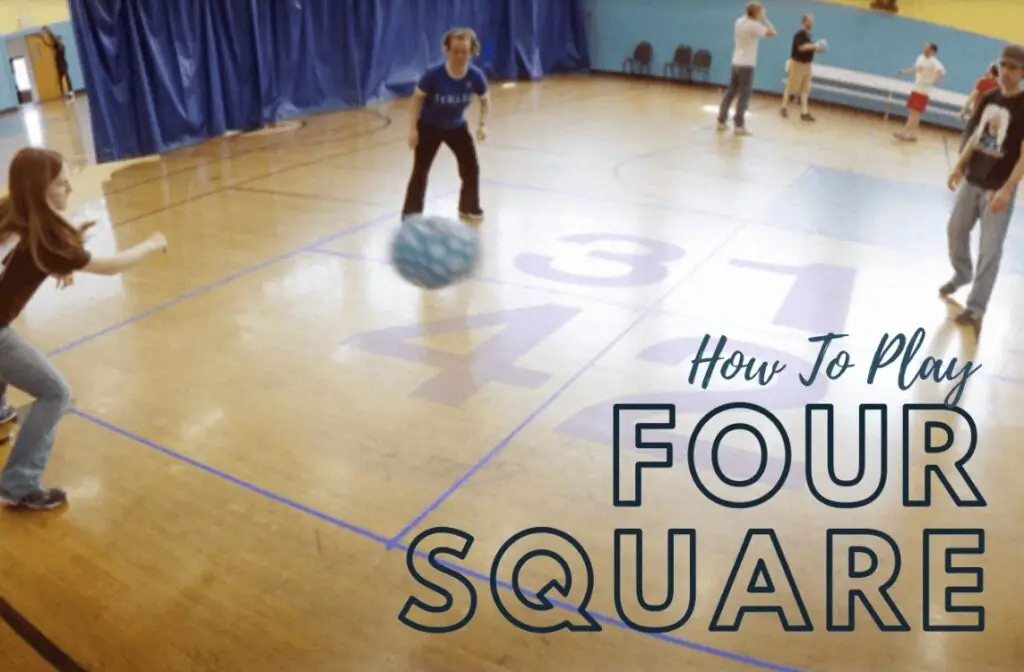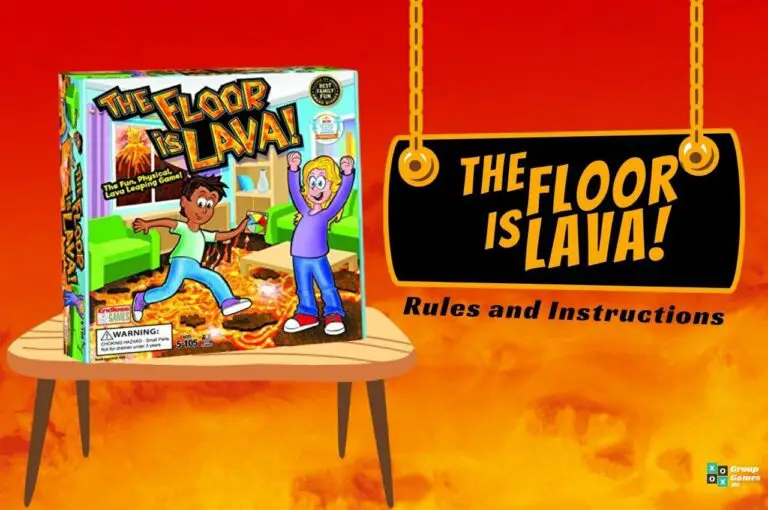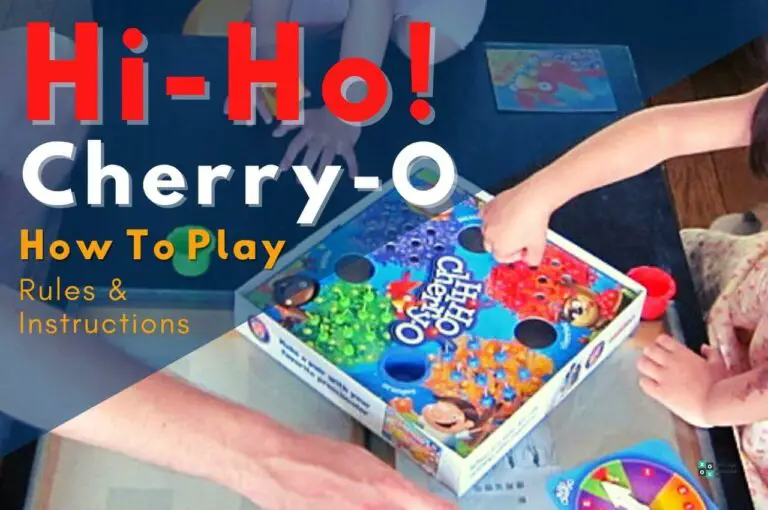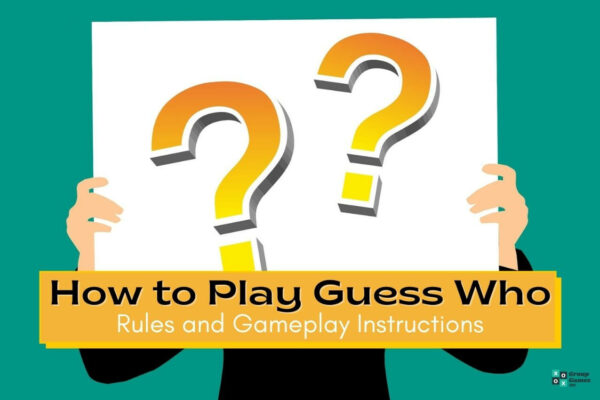If there’s one thing we love the most about the Foursquare game rules, it’s that they’re specifically designed to create a game that can be played just about anywhere, at any time, with minimal equipment necessary.
Unlike some outdoor games which, fun as they may be, take ages to set up and even longer to learn the rules, Foursquare requires little more than a ball, a couple of friends, and a straight-forward objective:
Eliminate your fellow players en route to the highest square by bouncing the ball into their square until they mess up and are eliminated.
Still not sure how to get a game underway?
Don’t worry, we’ve got you covered: Below, we’ll show you exactly how to play Foursquare, outlining the game’s easy-to-follow rules, how to set to up your squares, and explaining everything you need to know to enjoy this simple-yet-super-fun game for yourself.
Related: Kickball rules
What is Foursquare?
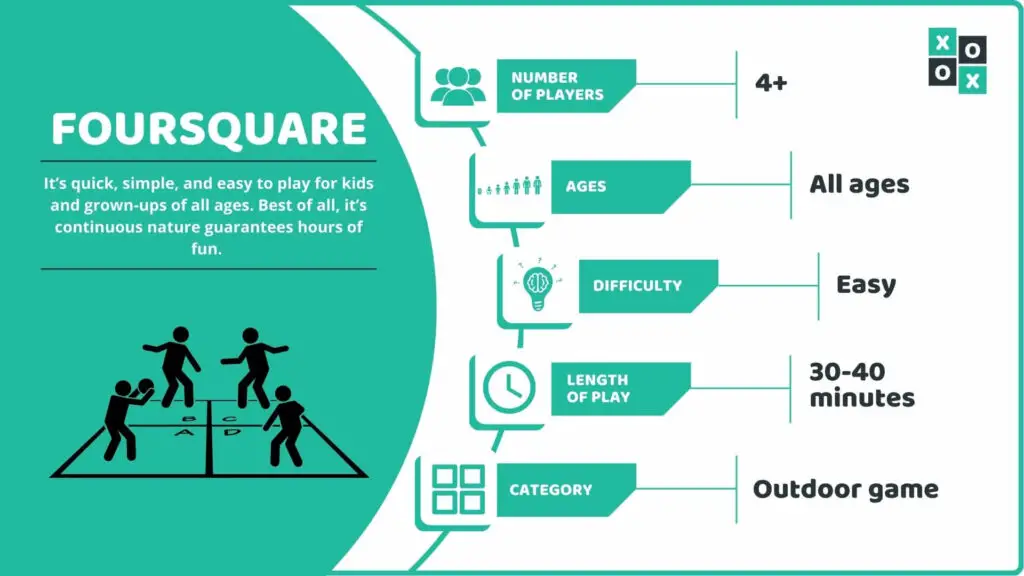
Dating all the way back to the 1950s where it started as a popular activity during PE lessons in schools across the United States, little about Foursquare has changed in the past 70+ years.
Though it’s certainly much more popular (there is even a Foursquare world championships held each year in Maine), and though it’s spawned modern-day spin-offs like the hit game Crossnet, the rules and gameplay remain exactly the same, making it a game that people of all ages are familiar with and can play together.
Number of Players Required: 4+.As the name implies, Foursquare needs at least four players, though it’s often more fun with more. The first four players start the game with the rest lining up behind the fourth square. Once a player is eliminated, the first player in line takes their place.
Who Can Play It: All ages
Difficulty: Easy
Main Objective: Advance to the highest square by eliminating all of the other players. A player is eliminated when they fail to bounce the ball out of their square into another one.
Why We Love It: It’s quick, simple, and easy to play for kids and grown-ups of all ages. Best of all, it’s continuous nature guarantees hours of fun.
Playing Foursquare: What You’ll Need
The true beauty of Foursquare is it requires very little equipment to play. All you need is a flat surface, a way to mark out the court, and a ball.
Official Foursquare balls do exist, and they can be a worthwhile investment if you’re planning to become a regular player as they offer just the right amount of bounce. These are the kind of balls used in official Foursquare leagues and tournaments, so if you’re thinking of getting competitive with it, it’s good to practice with an official ball.
Otherwise, casual players can play with any available ball that has a decent bounce.
If playing outdoors, sidewalk chalk can be used to draw your court, though anything from a ball of string or grass paint could work too.
How to Set Up a Game of Foursquare
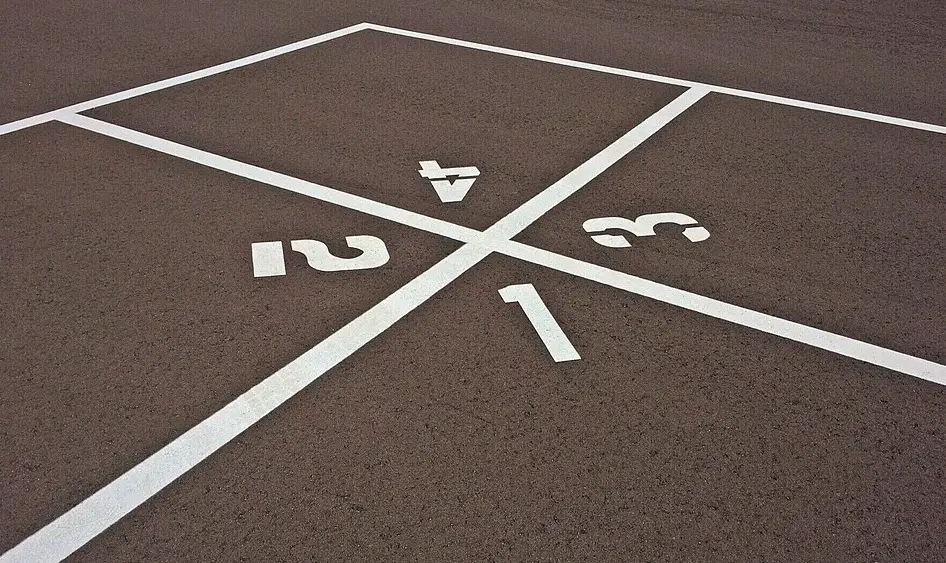
Official Foursquare game rules dictate that the court should be one large 16ft x 16ft square divided into four equal 8ft x 8ft squares. Keep in mind that these rules are designed to make the game challenging for adult players, so if you’re playing with young children, you might want to significantly reduce the size of your court to whatever is appropriate.
Once you’ve drawn your court, each square should be numbered, moving clockwise from 1 – 4, albeit with numbers 3 and 4 reversed (so that it goes 1,2,4,3). As shown in the image above, this means that squares 1 and 4 should be diagonally opposite one another as should squares 2 and 3.
Four Square Game Rules
With the court set up, the first four players decide which square they’re going to start in.
The rest of the players form a line behind square one, being sure to give that player enough room.
The player in the highest square then starts the game by serving the ball to the player in the lowest square (ie: Player 4 serves to Player 1)
For a serve to count, the ball must bounce once (but only once) in the server’s square. They can then strike the ball using any part of the hand (wrist to fingertip) to send it into the other player’s square.
The ball must then bounce once in that player’s square before they touch it.
Once the ball has been served from Square 4 to Square 1, it is considered to be “in play.” The Player in Square 1 (and all other players) can then serve the ball into any other square of their choosing.
The aim of the game is to serve the ball into an opponent’s square in such a way that they fail to hit it back out of their square in accordance with the rules.
When that happens, they’re eliminated from the game and a new person joins in.
How Players Are Eliminated in Foursquare
There are several ways that a player can be eliminated from Foursquare:
- The ball bounces twice in their square before they hit it
- They hit it before it bounces
- They hit the ball out of bounds
- They hold, catch, or carry the ball
- They hit the ball with any body part other than the hand.
When a player is eliminated, all of the other players move up one square. So, if the player in Square 4 is eliminated, the following would happen:
- The player in Square 3 moves into Square 4
- The player in Square 2 moves into Square 3
- The player in Square 2 moves into Square 3.
The player at the front of the line waiting to join the game then joins Square 1 and play continues until there are no more players to join the game.
At that point, play continues until one person is left in the fourth square. That person is the winner of the game.
Frequently Asked Questions About Foursquare
Can You Use Two Hands in Foursquare?
Yes. As long as both hands hit the ball at the same time, a two-handed hit is allowed. If you hit the ball with one hand and then the other, that counts as hitting the ball twice and means that the player is eliminated from the game.
What’s the Best Way to Win at Foursquare?
The same principle applies to Foursquare that applies to just about any game, whether it’s a game of darts or a round of golf:
The more you practice, the better you get, the better you get, the more likely you are to win.
That said, we do have a few tips you can put to work to help you improve your game no matter how much time you have to practice:
- Stand outside your square when receiving the ball. This gives you more room to work with and reduces the chance that the ball will fly past you.
- Practice the no-look pass. That’s when you look as if you’re aiming for one square, but actually shoot the ball into another one, catching the player in that square off guard.
- Always aim to eliminate the players in the higher squares first.
- Practice a hard spike. Though it can take a bit to master, spiking the ball often sends it high in the air and over an opposing player’s head, making it nigh on impossible for them to hit.
More Fun Foursquare Variations to Enjoy
As fun as Foursquare can be, if you play any game for too long it can start to feel a little repetitive. Thankfully, there are scores of variations you can add to your game to keep things interesting.
One of our favorites is the simple game of “Airball.” All of the same Foursquare game rules apply with one addition:
Every time you touch the ball, both feet have to be off the ground.
Alternatively, why not try out “Cherry Bomb.” Perhaps the most popular Foursquare variant, this version gives each player one opportunity to use a huge spike to send the ball into their opponent’s square, usually yelling out “Cherry Bomb!” as they do so.
Finally, Around the World adds a unique wildcard to the game. At any given moment, a player can yell out “Around the World!” At that point, the usual rules are paused and each player must serve the ball to the player on their right until it has been in all Foursquares.
After that, normal play resumes and this simple yet seriously fun game continues.

